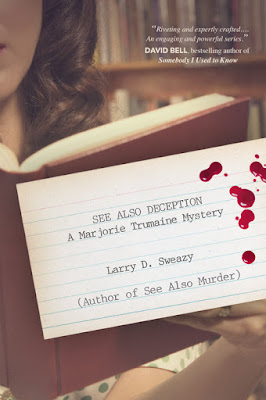 Andy Mozina is a professor of English at Kalamazoo College and the author of the short story collections The Women Were Leaving the Men, which won the Great Lakes Colleges Association New Writers Award, and Quality Snacks, which was a finalist for the Flannery O’Connor Prize.
Andy Mozina is a professor of English at Kalamazoo College and the author of the short story collections The Women Were Leaving the Men, which won the Great Lakes Colleges Association New Writers Award, and Quality Snacks, which was a finalist for the Flannery O’Connor Prize.Here Mozina dreamcasts an adaptation of his new book, Contrary Motion:
Matt Grzbc, the novel’s protagonist, is a divorced harpist living in Chicago and preparing for a symphony audition. He’s tall, ambitious, handsome, late 30’s, with a slightly robotic affect, a dark sense of humor, some crippling anxieties, a romantic life on the skids, and a six-year-old daughter to help raise. While trying to do justice to the important relationships in his life and prep for the audition, he plays weddings, brunches at the downtown Marriott, and bedside vigils at a hospice. After careful reflection, it seems to me that only John Krasinski, aka Jim Halpert from The Office, can play the role. He can do hangdog, he can do wiseass, he can do internal distress. He doesn’t look like a harpist, but neither does Matt, so that would be just right. Krasinski also wrote and directed Brief Interviews with Hideous Men, the film adaptation of David Foster Wallace’s short story collection, so I feel we have some influences in common.Visit Andy Mozina's website.
Matt has two love interests. His ex-wife Milena’s good sense, resilience, and unself-conscious sexiness could call for Jennifer Lawrence in a quieter, less warrior-like mode. His tightly wound girlfriend, a feisty lawyer, would be played by some magical combination of Chloë Sevigny and Jennifer Jason Leigh.
As far as Matt’s daughter goes, I’d have to have many long conversations with the casting director over this role. We would look for a child who could throw fits, weep at the drop of the hat, have many irrational fears, withdraw, show warmth and humor, and find moments of zen-like calm when least expected. We would hold numerous open-call auditions in hotel ballrooms in big cities. No luck. Then we’d crisscross the country, scouting shopping malls, playgrounds, and county fairs. After giving up, we would find her screaming at her mother in a Walgreen’s parking lot in Racine, Wisconsin. A star would be born.
The Page 69 Test: Contrary Motion.
Writers Read: Andy Mozina.
--Marshal Zeringue





















